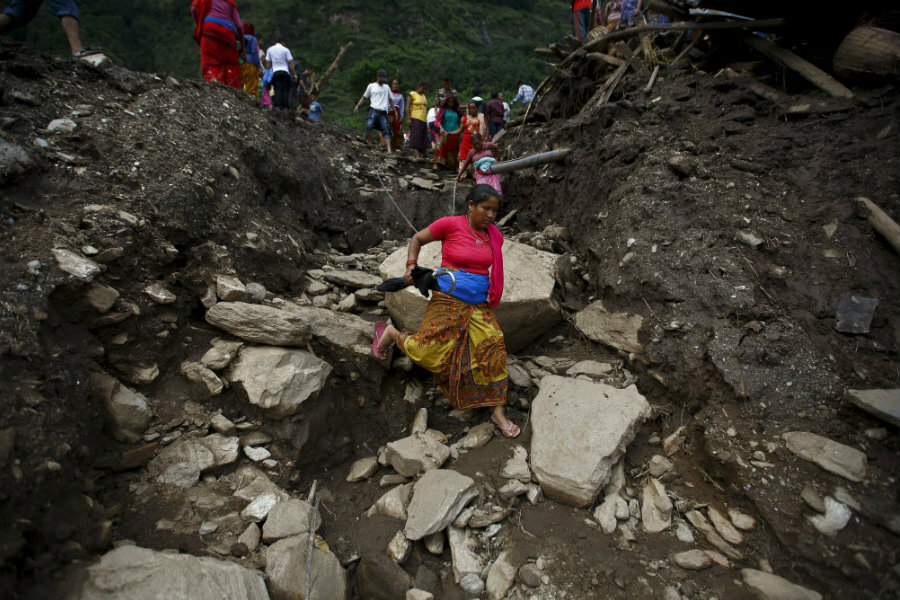Deadly monsoon landslides spotlight Nepal's post-quake challenges
Loading...
Nepal continues to face down disaster.
Landslides triggered by heavy rains shortly after midnight Thursday killed at least 30 people in villages near Pokhara, about 130 miles west of the capital, Kathmandu, reports say. Pokhara is a popular staging post for trekkers on the Annapurna circuit, which attracts 100,000 visitors a year, according to Reuters.
Thursday's landslides draw renewed attention to Nepal’s resilience just three months after two powerful earthquakes shook the nation and left nearly 9,000 people dead and 16,000 injured.
The first earthquake, which clocked a magnitude of 7.8, struck Nepal in late April; two weeks later another magnitude-7 quake swept the country. The quakes triggered massive landslides in western Nepal, displacing more people.
One silver lining of the deadly quakes was Nepal's squabbling political parties finally agreed to work together toward reform “in a way not seen in at least seven years,” The Christian Science Monitor reported last month. The result was progress on the country’s long-stalled constitution.
“The [quakes] left major political parties with no choice but to come together,” Guna Raj Luintel, editor of Nepalese daily Nagarik, told the Monitor. “They needed to agree… to win the confidence of the international community.”
In the aftermath, more than 50 foreign nations and donor agencies pledged over $4.4 billion – about two-thirds the estimated cost of recovery – in relief funding for Nepal, the Monitor reported.
And in early July, Britain lifted travel warnings set in place after the earthquakes, The Guardian reports. The alerts had hobbled Nepal’s tourism industry, which generates a much-needed $1.6 billion for the country every year.
But the latest landslides show the challenges facing Nepal. And they confirm scientists’ warnings that the quakes make the current monsoon season, which lasts from June through September, more unpredictable.
“Landslides are a common secondary hazard triggered by earthquakes or rainfall,” Dalia Kirschbaum, a scientist at NASA’s Goddard Space Flight Center and a leader of a landslide mapping effort in Nepal, said in a June statement. “Because landslides can mobilize and move so quickly, they often cause more damage than people realize.“
In Lumle, a village about 9 miles from the start of the Annapurna trail, mud and rocks from the latest landslide buried about half the homes and at least 13 bodies were recovered from the rubble, Reuters reports. Soldiers and policemen, lacking gear for rescue efforts, were forced to work with shovels and food bowls in the search for nine missing villagers.
One rescue team had reached the affected area, and others were on their way, chief district officer Krishna Bahadur Raut told the BBC Thursday afternoon.








